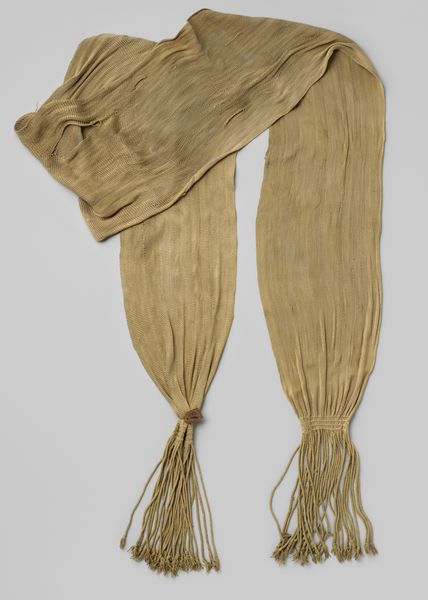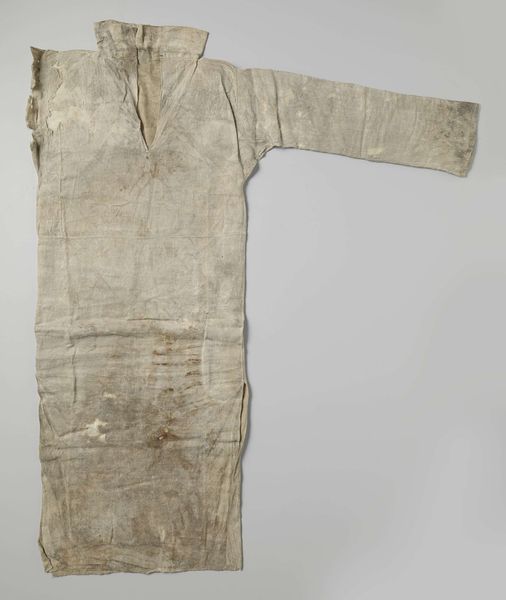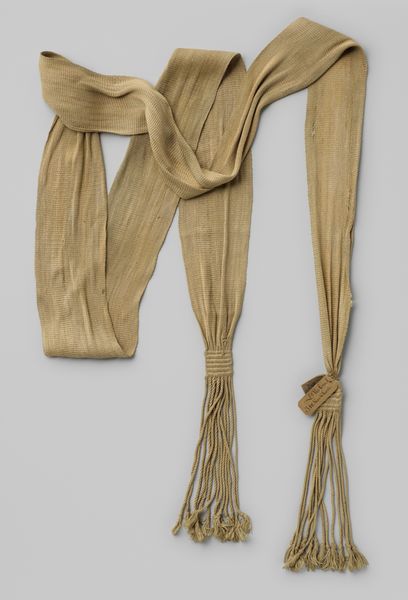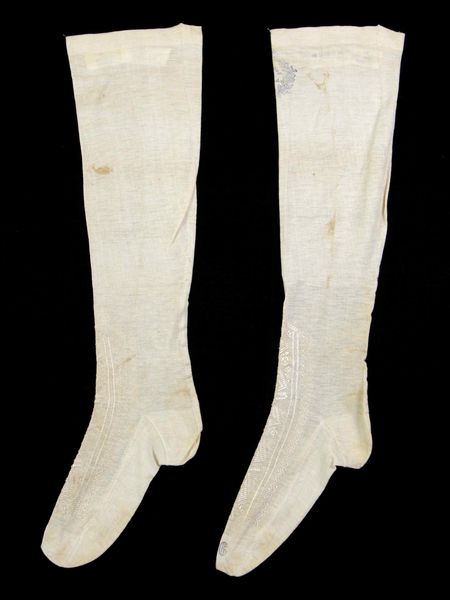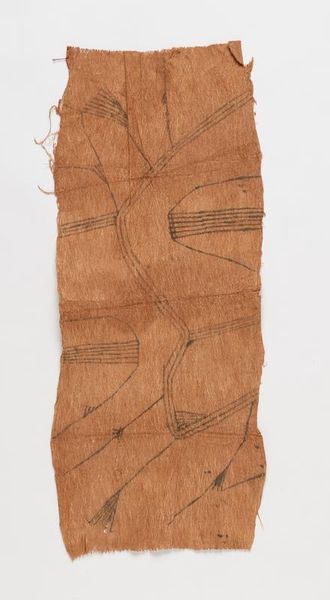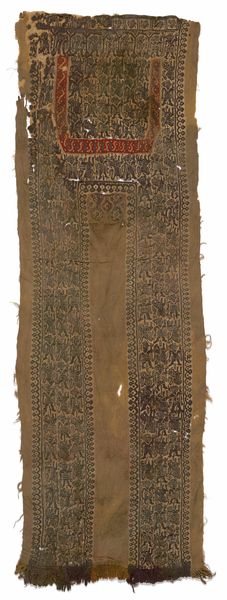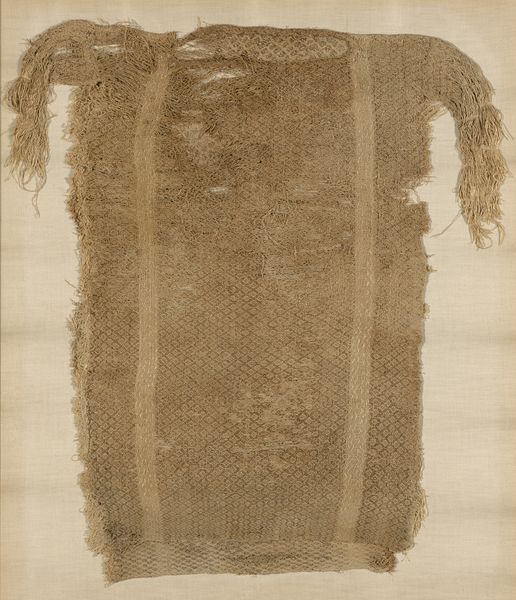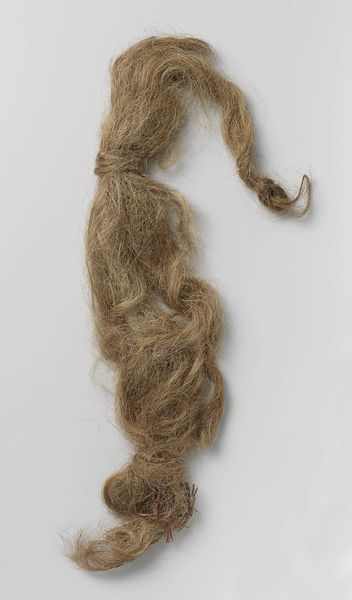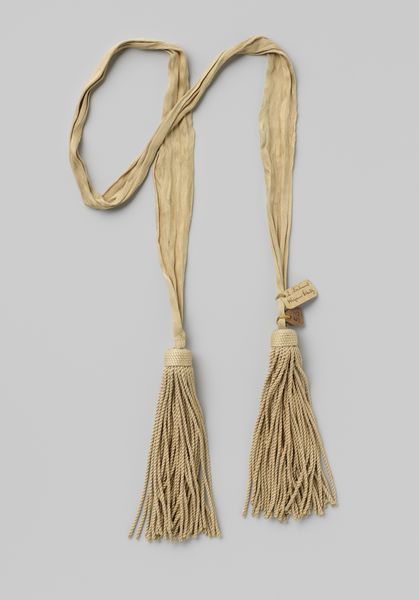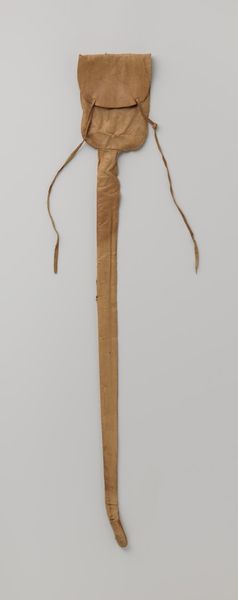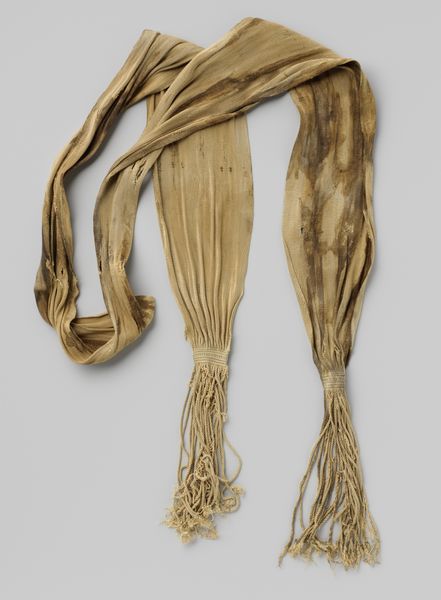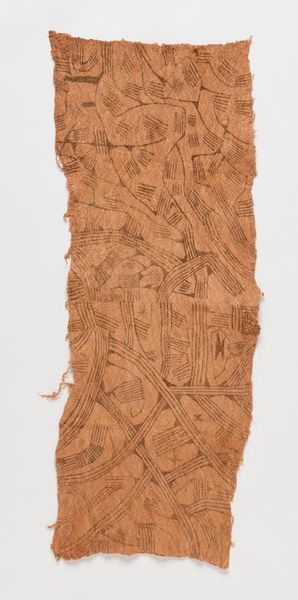
Sjerp gedragen door L.H. Paravicini di Capelle, 1e luitenant bij de 9e Afd. Infanterie 1800 - 1830
0:00
0:00
textile
#
textile
Dimensions: width 88.5 cm, height 7 cm, depth 62 cm, length 262 cm, width 12 cm
Copyright: Rijks Museum: Open Domain
Curator: Let's turn our attention to this sash, created between 1800 and 1830. It was worn by L.H. Paravicini di Capelle, a 1st Lieutenant in the 9th Infantry Division. Editor: My first impression is one of stark utility. It looks well-worn, made from a rough textile—perhaps hemp or linen? The very texture suggests it has faced a life of service and labor. Curator: Precisely! Its materiality offers a fascinating glimpse into the lived experience of military personnel at the time. The raw textile and visible wear hint at the socio-economic conditions affecting those in service. How were textiles procured for such uniforms? Who wove them? Was it outsourced? I see marks upon it, as well; they could very well point towards moments of impact and stress. Editor: That is correct. The question is this: can we tell more of this man’s journey via the weaving style? Consider that the craft speaks volumes, but in which direction? Was this item produced quickly and affordably? We should analyze it in depth, as these sorts of things were created in an early modern military production-centered environment. How does its survival challenge assumptions about disposability and value, and how should our work approach this issue? Curator: Absolutely. And what does it tell us about Paravicini di Capelle himself? This sash acts as a symbolic marker, a statement of identity, as much as it is a functional item. In this respect, how might we recontextualize Paravicini’s identity against the politics of that era through what he would physically wear? Editor: That brings us into considering this question: if military craft objects can survive like this into our age, does the message they carry allow an insight into understanding the power that production has, culturally, or lack thereof? Was it only happenstance that the textile has survived at all, in its state? Curator: Indeed, understanding it intersectionally—social class, military status, material constraints—opens up deeper understanding, making our journey to its full recognition more vivid. Editor: Materiality certainly helps unlock narratives. There is still an opportunity to analyze military labor through it. This should encourage new perspectives within the existing paradigm!
Comments
No comments
Be the first to comment and join the conversation on the ultimate creative platform.
